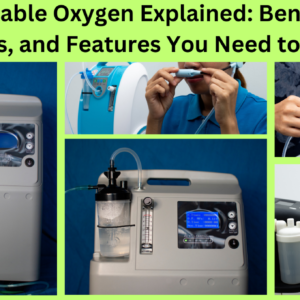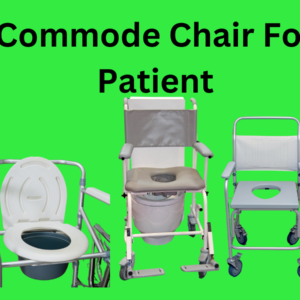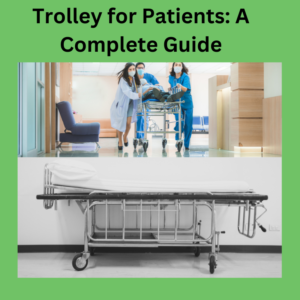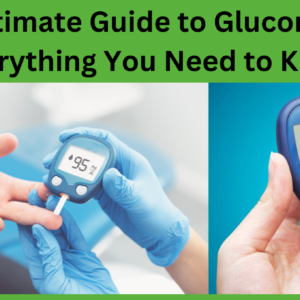Pulse Oximeter Features: Everything You Need to Know About Oxygen Saturation Monitoring
Overview of Pulse Oximeters
A pulse oximeter is a tiny, non-invasive medical gadget that detects pulse rate and blood oxygen saturation level (SpO₂). This portable gadget has completely changed patient monitoring by providing accurate and timely information about a person’s respiratory condition. Pulse oximeters have become indispensable instruments in contemporary healthcare, whether used in clinics, hospitals, or homes.
How Do Pulse Oximeters Operate?
Operational Principle
Spectrophotometry is the principle that pulse oximeters use to work. Red and infrared light wavelengths are emitted by the gadget through a bodily part, typically the earlobe or fingertip. Oxygen saturation is determined by comparing the light absorption of oxygenated and deoxygenated hemoglobin.
Parts of an LED Pulse Oximeter Source of Light: releases infrared and red light.
A photodetector measures how much light is coming through.
Microprocessor: Produces numerical values for pulse rate and SpO₂ from light data.
The Value of Oximeters for Pulses
Early Hypoxemia Detection
Pulse oximeters aid in the early detection of hypoxemia, or low blood oxygen levels, which helps avoid serious consequences, including respiratory failure or organ damage.
Vital in Long-Term Respiratory Disorders
Pulse oximeters are used by patients with asthma, sleep apnea, and COPD to track their oxygen levels at rest and during flare-ups.
Crucial to the Monitoring of COVID-19
Pulse oximeters became popular for at-home monitoring during the COVID-19 epidemic, enabling prompt action when oxygen levels fell below average.
Pulse oximeter types
1. Pulse oximeters on the fingertip
Portability: Battery-powered and small.
Use: Perfect for spot-checking and individual use.
2. Pulse oximeters that are portable
Features include sophisticated features like data storage.
Use: In ambulances and hospitals.
3. Pulse oximeters worn on the wrist
Convenience: Wearable technology allows for continuous monitoring.
Use: Suggested for sleep study monitoring during the night.
4. Pulse oximeters for children
Design: Littler probes made for kids and babies.
Usage: Made for pediatric or neonatal patients.
Considerations for Selecting a Pulse Oximeter
1. Precision
Make sure the equipment gives accurate readings that have been verified by regulatory bodies such as the FDA or CE.
2. Features of the Display
Seek out gadgets that display SpO₂, pulse rate, and perfusion index on bright, readable screens.
3. Life of the Battery
For frequent usage, choose gadgets with rechargeable or long-lasting batteries.
4. Sturdiness
The equipment is guaranteed to endure frequent usage thanks to high-quality materials, particularly in clinical environments.
How to Properly Use a Pulse Oximeter
Detailed Instructions
Get the device ready: Make sure the oximeter has enough battery life before turning it on.
Put on Earlobe or Finger: Securely fasten the sensor without obstructing blood flow.
Remain still because movement can skew measurements.
Analyze the findings: Await the device’s stabilization and reading display.
Typical Readings
95%–100% SpO₂
Adults’ pulse rates range from 60 to 100 beats per minute (bpm).
Constraints with Pulse Oximeters
1. Outside influences
Cold Fingers: Accuracy may be impacted by decreased blood flow.
Nail polish: Light transmission is impeded by dark or opaque nail polish.
2. Errors in Calibration
Inaccurate readings could be caused by damaged sensors or improper calibration.
3. Unsuitable under Specific Circumstances
In circumstances of severe anemia or carbon monoxide poisoning, pulse oximeters might not give reliable readings.
In clinical use, pulse oximeters are used in emergency rooms to track oxygen levels in severely ill patients, directing oxygen therapy and other treatments.
Operating Rooms
In order to guarantee proper oxygenation during procedures, anesthesiologists rely on pulse oximeters.
Wards and ICUs
In intensive care units, constant monitoring makes it possible to quickly identify changes in oxygen levels.
Utilizing Pulse Oximeters at Home
1. Management of Chronic Illnesses
Patients with cardiovascular or respiratory conditions can monitor their oxygen levels and communicate information to medical professionals.
2. Health and Wellbeing
Pulse oximeters are used by athletes to track their oxygen levels when training or at high elevations.
Pulse Oximeters’ Function in JCI and NABH Accreditation
1. Standards for Patient Safety
The use of pulse oximeters to guarantee patient safety is emphasized by accreditation by the Joint Commission International (JCI) and the National Accreditation Board for Hospitals (NABH).
2. Assurance of Quality
Maintaining accreditation requires clinical treatment standards that are in line with accurate oxygen level monitoring.
The Pulse Oximeter’s Future
1. Cutting Edge Technology
Accessibility and data exchange are improved by integration with wearable technology and cellphones.
2. Insights Driven by AI
Artificial intelligence is capable of trend analysis and oxygenation degradation prediction.
In conclusion
Pulse oximeters are essential instruments in today’s healthcare environment, serving as a bridge between clinical accuracy and convenient monitoring. These gadgets provide vital health insights to users in homes and hospitals, encouraging prompt treatments and proactive care.
FAQ 1. What is the typical level of oxygen saturation?
For healthy people, normal SpO₂ values fall between 95% and 100%.
2. Can COVID-19 be detected by pulse oximeters?
Pulse oximeters track oxygen levels and can identify hypoxemia, a common COVID-19 symptom, but they are not able to diagnose the virus.
3. How frequently should I use a home pulse oximeter?
Although patients with respiratory disorders should usually check their levels during rest and activity, you should speak with your healthcare professional.
4. Can kids safely use pulse oximeters?
Indeed, pediatric pulse oximeters are made specifically for young children and babies.
5. If my SpO₂ levels are less than 90%, what should I do?
Get medical help right away because this is a sign of low oxygen saturation that has to be addressed.
{Please note: If you want nursing wellness and patient care-related items, then click ON ABOVE
HIGHLIGHTED Blue words OR below is my website link and get items easily: https://diseasewellnessbounque.in OR https://amzn.to/40lXGaM }
Overview of Pulse Oximeters
A pulse oximeter is a tiny, non-invasive medical gadget that detects pulse rate and blood oxygen saturation level (SpO₂). This portable gadget has completely changed patient monitoring by providing accurate and timely information about a person’s respiratory condition. Pulse oximeters have become indispensable instruments in contemporary healthcare, whether used in clinics, hospitals, or homes.
How Do Pulse Oximeters Operate?
Operational Principle
Spectrophotometry is the principle that pulse oximeters use to work. Red and infrared light wavelengths are emitted by the gadget through a bodily part, typically the earlobe or fingertip. Oxygen saturation is determined by comparing the light absorption of oxygenated and deoxygenated hemoglobin.
Parts of an LED Pulse Oximeter Source of Light: releases infrared and red light.
A photodetector measures how much light is coming through.
Microprocessor: Produces numerical values for pulse rate and SpO₂ from light data.
The Value of Oximeters for Pulses
Early Hypoxemia Detection
Pulse oximeters aid in the early detection of hypoxemia, or low blood oxygen levels, which helps avoid serious consequences, including respiratory failure or organ damage.
Vital in Long-Term Respiratory Disorders
Pulse oximeters are used by patients with asthma, sleep apnea, and COPD to track their oxygen levels at rest and during flare-ups.
Crucial to the Monitoring of COVID-19
Pulse oximeters became popular for at-home monitoring during the COVID-19 epidemic, enabling prompt action when oxygen levels fell below average.
Pulse oximeter types
1. Pulse oximeters on the fingertip
Portability: Battery-powered and small.
Use: Perfect for spot-checking and individual use.
2. Pulse oximeters that are portable
Features include sophisticated features like data storage.
Use: In ambulances and hospitals.
3. Pulse oximeters worn on the wrist
Convenience: Wearable technology allows for continuous monitoring.
Use: Suggested for sleep study monitoring during the night.
4. Pulse oximeters for children
Design: Littler probes made for kids and babies.
Usage: Made for pediatric or neonatal patients.
Considerations for Selecting a Pulse Oximeter
1. Precision
Make sure the equipment gives accurate readings that have been verified by regulatory bodies such as the FDA or CE.
2. Features of the Display
Seek out gadgets that display SpO₂, pulse rate, and perfusion index on bright, readable screens.
3. Life of the Battery
For frequent usage, choose gadgets with rechargeable or long-lasting batteries.
4. Sturdiness
The equipment is guaranteed to endure frequent usage thanks to high-quality materials, particularly in clinical environments.
How to Properly Use a Pulse Oximeter
Detailed Instructions
Get the device ready: Make sure the oximeter has enough battery life before turning it on.
Put on Earlobe or Finger: Securely fasten the sensor without obstructing blood flow.
Remain still because movement can skew measurements.
Analyze the findings: Await the device’s stabilization and reading display.
Typical Readings
95%–100% SpO₂
Adults’ pulse rates range from 60 to 100 beats per minute (bpm).
Constraints with Pulse Oximeters
1. Outside influences
Cold Fingers: Accuracy may be impacted by decreased blood flow.
Nail polish: Light transmission is impeded by dark or opaque nail polish.
2. Errors in Calibration
Inaccurate readings could be caused by damaged sensors or improper calibration.
3. Unsuitable under Specific Circumstances
In circumstances of severe anemia or carbon monoxide poisoning, pulse oximeters might not give reliable readings.
In clinical use, pulse oximeters are used in emergency rooms to track oxygen levels in severely ill patients, directing oxygen therapy and other treatments.
Operating Rooms
In order to guarantee proper oxygenation during procedures, anesthesiologists rely on pulse oximeters.
Wards and ICUs
In intensive care units, constant monitoring makes it possible to quickly identify changes in oxygen levels.
Utilizing Pulse Oximeters at Home
1. Management of Chronic Illnesses
Patients with cardiovascular or respiratory conditions can monitor their oxygen levels and communicate information to medical professionals.
2. Health and Wellbeing
Pulse oximeters are used by athletes to track their oxygen levels when training or at high elevations.
Pulse Oximeters’ Function in JCI and NABH Accreditation
1. Standards for Patient Safety
The use of pulse oximeters to guarantee patient safety is emphasized by accreditation by the Joint Commission International (JCI) and the National Accreditation Board for Hospitals (NABH).
2. Assurance of Quality
Maintaining accreditation requires clinical treatment standards that are in line with accurate oxygen level monitoring.
The Pulse Oximeter’s Future
1. Cutting Edge Technology
Accessibility and data exchange are improved by integration with wearable technology and cellphones.
2. Insights Driven by AI
Artificial intelligence is capable of trend analysis and oxygenation degradation prediction.
In conclusion
Pulse oximeters are essential instruments in today’s healthcare environment, serving as a bridge between clinical accuracy and convenient monitoring. These gadgets provide vital health insights to users in homes and hospitals, encouraging prompt treatments and proactive care.
FAQ 1. What is the typical level of oxygen saturation?
For healthy people, normal SpO₂ values fall between 95% and 100%.
2. Can COVID-19 be detected by pulse oximeters?
Pulse oximeters track oxygen levels and can identify hypoxemia, a common COVID-19 symptom, but they are not able to diagnose the virus.
3. How frequently should I use a home pulse oximeter?
Although patients with respiratory disorders should usually check their levels during rest and activity, you should speak with your healthcare professional.
4. Can kids safely use pulse oximeters?
Indeed, pediatric pulse oximeters are made specifically for young children and babies.
5. If my SpO₂ levels are less than 90%, what should I do?
Get medical help right away because this is a sign of low oxygen saturation that has to be addressed.
{Please note: If you want nursing wellness and patient care-related items, then click ON ABOVE
HIGHLIGHTED Blue words OR below is my website link and get items easily: https://diseasewellnessbounque.in OR https://amzn.to/40lXGaM }
Overview of Pulse Oximeters
A pulse oximeter is a tiny, non-invasive medical gadget that detects pulse rate and blood oxygen saturation level (SpO₂). This portable gadget has completely changed patient monitoring by providing accurate and timely information about a person’s respiratory condition. Pulse oximeters have become indispensable instruments in contemporary healthcare, whether used in clinics, hospitals, or homes.
How Do Pulse Oximeters Operate?
Operational Principle
Spectrophotometry is the principle that pulse oximeters use to work. Red and infrared light wavelengths are emitted by the gadget through a bodily part, typically the earlobe or fingertip. Oxygen saturation is determined by comparing the light absorption of oxygenated and deoxygenated hemoglobin.
Parts of an LED Pulse Oximeter Source of Light: releases infrared and red light.
A photodetector measures how much light is coming through.
Microprocessor: Produces numerical values for pulse rate and SpO₂ from light data.
The Value of Oximeters for Pulses
Early Hypoxemia Detection
Pulse oximeters aid in the early detection of hypoxemia, or low blood oxygen levels, which helps avoid serious consequences, including respiratory failure or organ damage.
Vital in Long-Term Respiratory Disorders
Pulse oximeters are used by patients with asthma, sleep apnea, and COPD to track their oxygen levels at rest and during flare-ups.
Crucial to the Monitoring of COVID-19
Pulse oximeters became popular for at-home monitoring during the COVID-19 epidemic, enabling prompt action when oxygen levels fell below average.
Pulse oximeter types
1. Pulse oximeters on the fingertip
Portability: Battery-powered and small.
Use: Perfect for spot-checking and individual use.
2. Pulse oximeters that are portable
Features include sophisticated features like data storage.
Use: In ambulances and hospitals.
3. Pulse oximeters worn on the wrist
Convenience: Wearable technology allows for continuous monitoring.
Use: Suggested for sleep study monitoring during the night.
4. Pulse oximeters for children
Design: Littler probes made for kids and babies.
Usage: Made for pediatric or neonatal patients.
Considerations for Selecting a Pulse Oximeter
1. Precision
Make sure the equipment gives accurate readings that have been verified by regulatory bodies such as the FDA or CE.
2. Features of the Display
Seek out gadgets that display SpO₂, pulse rate, and perfusion index on bright, readable screens.
3. Life of the Battery
For frequent usage, choose gadgets with rechargeable or long-lasting batteries.
4. Sturdiness
The equipment is guaranteed to endure frequent usage thanks to high-quality materials, particularly in clinical environments.
How to Properly Use a Pulse Oximeter
Detailed Instructions
Get the device ready: Make sure the oximeter has enough battery life before turning it on.
Put on Earlobe or Finger: Securely fasten the sensor without obstructing blood flow.
Remain still because movement can skew measurements.
Analyze the findings: Await the device’s stabilization and reading display.
Typical Readings
95%–100% SpO₂
Adults’ pulse rates range from 60 to 100 beats per minute (bpm).
Constraints with Pulse Oximeters
1. Outside influences
Cold Fingers: Accuracy may be impacted by decreased blood flow.
Nail polish: Light transmission is impeded by dark or opaque nail polish.
2. Errors in Calibration
Inaccurate readings could be caused by damaged sensors or improper calibration.
3. Unsuitable under Specific Circumstances
In circumstances of severe anemia or carbon monoxide poisoning, pulse oximeters might not give reliable readings.
In clinical use, pulse oximeters are used in emergency rooms to track oxygen levels in severely ill patients, directing oxygen therapy and other treatments.
Operating Rooms
In order to guarantee proper oxygenation during procedures, anesthesiologists rely on pulse oximeters.
Wards and ICUs
In intensive care units, constant monitoring makes it possible to quickly identify changes in oxygen levels.
Utilizing Pulse Oximeters at Home
1. Management of Chronic Illnesses
Patients with cardiovascular or respiratory conditions can monitor their oxygen levels and communicate information to medical professionals.
2. Health and Wellbeing
Pulse oximeters are used by athletes to track their oxygen levels when training or at high elevations.
Pulse Oximeters’ Function in JCI and NABH Accreditation
1. Standards for Patient Safety
The use of pulse oximeters to guarantee patient safety is emphasized by accreditation by the Joint Commission International (JCI) and the National Accreditation Board for Hospitals (NABH).
2. Assurance of Quality
Maintaining accreditation requires clinical treatment standards that are in line with accurate oxygen level monitoring.
The Pulse Oximeter’s Future
1. Cutting Edge Technology
Accessibility and data exchange are improved by integration with wearable technology and cellphones.
2. Insights Driven by AI
Artificial intelligence is capable of trend analysis and oxygenation degradation prediction.
In conclusion
Pulse oximeters are essential instruments in today’s healthcare environment, serving as a bridge between clinical accuracy and convenient monitoring. These gadgets provide vital health insights to users in homes and hospitals, encouraging prompt treatments and proactive care.
FAQ 1. What is the typical level of oxygen saturation?
For healthy people, normal SpO₂ values fall between 95% and 100%.
2. Can COVID-19 be detected by pulse oximeters?
Pulse oximeters track oxygen levels and can identify hypoxemia, a common COVID-19 symptom, but they are not able to diagnose the virus.
3. How frequently should I use a home pulse oximeter?
Although patients with respiratory disorders should usually check their levels during rest and activity, you should speak with your healthcare professional.
4. Can kids safely use pulse oximeters?
Indeed, pediatric pulse oximeters are made specifically for young children and babies.
5. If my SpO₂ levels are less than 90%, what should I do?
Get medical help right away because this is a sign of low oxygen saturation that has to be addressed.
{Please note: If you want nursing wellness and patient care-related items, then click ON ABOVE
HIGHLIGHTED Blue words OR below is my website link and get items easily: https://diseasewellnessbounque.in OR https://amzn.to/40lXGaM }






Reviews
There are no reviews yet.